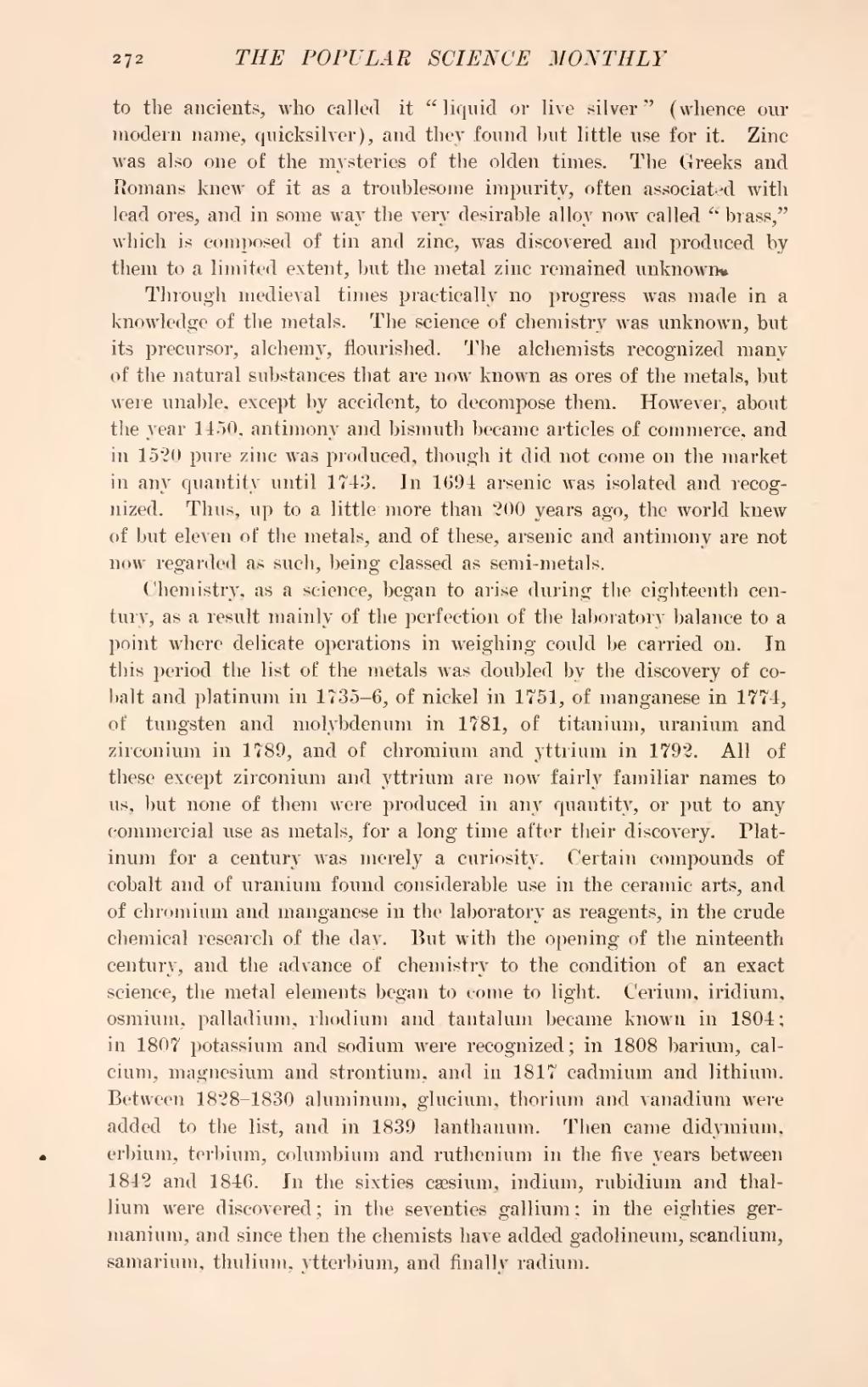to the ancients, who called it "liquid or live silver" (whence our modern name, quicksilver), and they found but little use for it. Zinc was also one of the mysteries of the olden times. The Greeks and Romans knew of it as a troublesome impurity, often associated with lead ores, and in some way the very desirable alloy now called "brass," which is composed of tin and zinc, was discovered and produced by them to a limited extent, but the metal zinc remained unknown*
Through medieval times practically no progress was made in a knowledge of the metals. The science of chemistry was unknown, but its precursor, alchemy, flourished. The alchemists recognized many of the natural substances that are now known as ores of the metals, but were unable, except by accident, to decompose them. However, about the year 1450, antimony and bismuth became articles of commerce, and in 1520 pure zinc was produced, though it did not come on the market in any quantity until 1743. In 1694 arsenic was isolated and recognized. Thus, up to a little-more than 200 years ago, the world knew of but eleven of the metals, and of these, arsenic and antimony are not now regarded as such, being classed as semi-metals.
Chemistry, as a science, began to arise during the eighteenth century, as a result mainly of the perfection of the laboratory balance to a point where delicate operations in weighing could be carried on. In this period the list of the metals was doubled by the discovery of cobalt and platinum in 1735-6, of nickel in 1751, of manganese in 1774, of tungsten and molybdenum in 1781, of titanium, uranium and zirconium in 1789, and of chromium and yttrium in 1792. All of these except zirconium and yttrium are now fairly familiar names to us, but none of them were produced in any quantity, or put to any commercial use as metals, for a long time after their discovery. Platinum for a century was merely a curiosity. Certain compounds of cobalt and of uranium found considerable use in the ceramic arts, and of chromium and manganese in the laboratory as reagents, in the crude chemical research of the day. But with the opening of the ninteenth century, and the advance of chemistry to the condition of an exact science, the metal elements began to come to light. Cerium, iridium, osmium, palladium, rhodium and tantalum became known in 1804; in 1807 potassium and sodium were recognized; in 1808 barium, calcium, magnesium and strontium, and in 1817 cadmium and lithium. Between 1828-1830 aluminum, glucium, thorium and vanadium were added to the list, and in 1839 lanthanum. Then came didymium, erbium, terbium, columbium and ruthenium in the five years between 1842 and 1846. In the sixties cæsium, indium, rubidium and thallium were discovered; in the seventies gallium: in the eighties germanium, and since then the chemists have added gadolineum, scandium, samarium, thulium, ytterbium, and finally radium.
